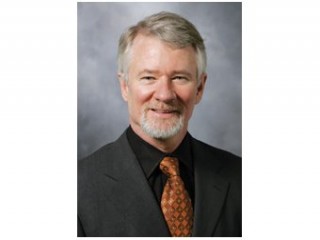
John Patton (biologist) biography
Date of birth : -
Date of death : -
Birthplace : U.S.A
Nationality : American
Category : Science and Technology
Last modified : 2011-09-22
Credited as : entrepreneur, Shearwater, Nektar Therapeutics, drug delivery systems
0 votes so far
Patton began his career as a marine biologist. He earned a bachelor's degree in zoology and biochemistry from Pennsylvania State University, followed this up with a master's in oceanography at the University of Rhode Island, and then studied at the University of California, San Diego, Scripps Institution of Oceanography. After receiving his Ph.D. from the University of California, Patton took a postdoctorate position at Harvard Medical School, working in biomedicine. He also worked at the University of Lund, in Sweden, also in biomedicine. In 1979, Patton moved to the University of Georgia, where he was an assistant professor in the department of Marine Science and Microbiology. Patton got tenure at Georgia in 1984, but in 1985 he asked for a two-year leave of absence to take a job at the biotechnology firm Genentech, in San Francisco, California.
Genentech is considered the founder of the biotechnology industry in the United States. It started in San Francisco in 1976, where it pioneered recombinant DNA technology. Genentech offered Patton the position of Project Team Leader, working on non-invasive drug delivery systems. Patton's expertise was in the delivery of large molecules through the lungs. Patton's team at Genentech concentrated on refining the so-called pulmonary intake method of drug delivery. Chemicals inhaled deeply into the lungs go straight to the bloodstream, making this an optimal way to deliver certain pharmaceuticals. Drugs for asthma and other lung diseases are typically inhaled, and the technology for asthma inhalers had been around since the 1960s. Efforts to make an inhalable form of insulin dated back to the 1920s, but no one had been able to surmount certain physical difficulties. The advantages of this method of drug delivery were clear. Not only did the drug move quickly into the bloodstream, but pulmonary intake was painless. This made it a promising delivery method for drugs like vaccines for small children. The pain issue was also especially important in the case of insulin because of how frequently it had to be injected. Some diabetics require as many as five injections of the drug, every single day. Doctors believed some diabetics did not use all the medicine they were prescribed, because of reluctance to inject. An easier drug delivery system for diabetics would be a major breakthrough.
Patton formally resigned from his academic job in 1987, and worked at Genentech through 1990. As he got more involved in the science of inhalable drug delivery, he became convinced that an inhalable insulin was feasible. But there were still formidable obstacles. Asthma drugs could be inhaled because the precise dosage was not that important. If some hit the back of the throat instead of going down into the lungs, the user had no ill effects. Insulin could not be treated so casually. Either too much or too little insulin gave diabetics immediate effects such as dizziness or nausea, and a dose that was way off could even put the patient into shock. Also, insulin consists of large molecules. In order for the drug to reach deep into the lungs, the chemical had to be reconfigured into smaller particles. Patton was convinced these problems could be overcome. But Genentech thought devising an inhalable insulin would be too expensive. When he could not get his employer to go along with his plans, Patton decided to go into business for himself. In 1990, Patton quit his job, though he had three children nearing college age, and his wife was not employed. He sold his stock options in Genentech in order to keep going, and he and a friend, physicist Bob Platz, began making cold calls to potential investors. The pair took their business plan to countless meetings, and were turned down time and again. Patton was beginning to run out of money. Finally he met with a venture capital firm called Onset Ventures, and its team was thrilled with Patton's idea. Onset invested $650,000 in Patton's new company, which was called Inhale Therapeutic Systems. The company went public in 1994. The large New York-based pharmaceutical company Pfizer Inc. invested in Inhale, and ran its clinical trials. By the mid-1990s, Inhale was already testing an inhalable insulin that was pumped out of a six-inch tall forced-air device. The device shot compressed air at sonic velocity, breaking the insulin into a fine powder. The patient then took a slow inhalation, dragging the insulin deep into the lungs. Inhale Therapeutics named its device Exubera.
Inhale Therapeutics Systems changed its name to Nektar Therapeutics in 2003 when it merged with Bradford Particle Design and another biotechnology company called Shearwater. Patton remained as Chief Scientific Officer of Nektar. Exubera was still in the late stages of clinical trials by 2004, awaiting approval from the Food and Drug Administration (FDA). Meanwhile, other companies were developing competing products. Questions remained about inhalable insulin, such as the long-term effects on users' lungs, and whether the higher price of the inhalable drug would keep people using the traditional injectable insulin. Patton remained firmly committed to his dream. He told Claudia Kalb and Jamie Reno of Newsweek, "I'm not going to quit until it's on the market and being used."
















